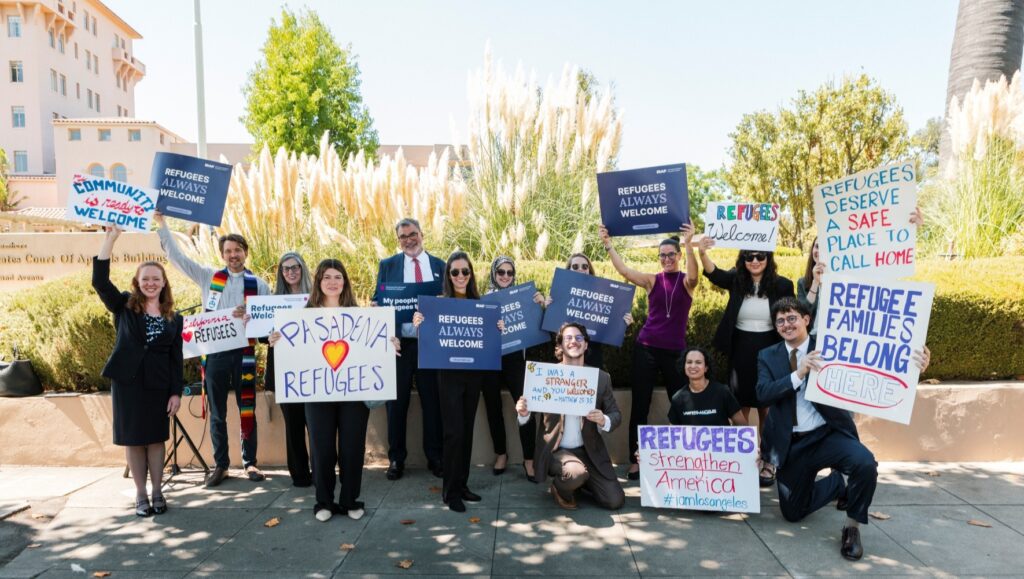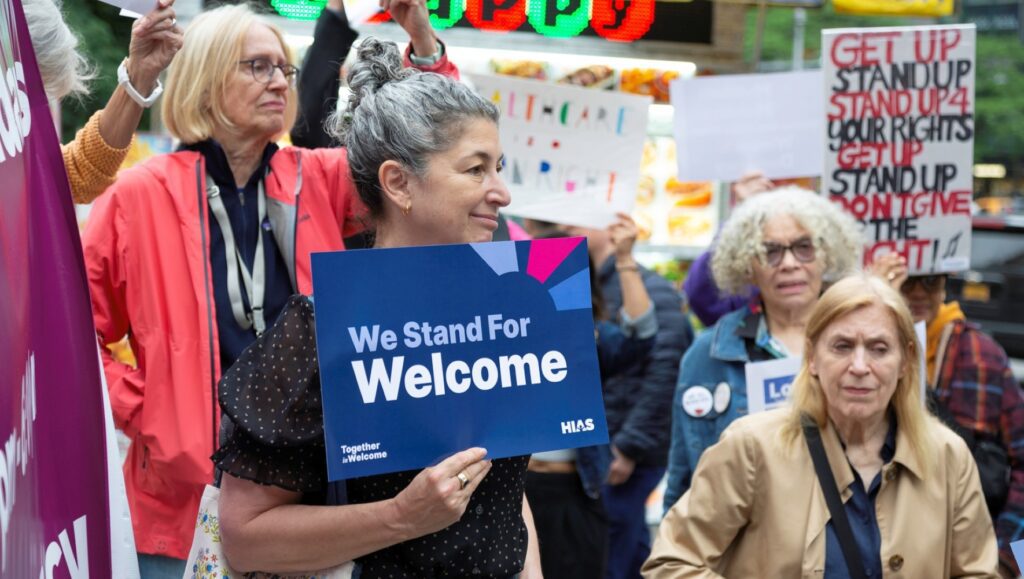
Though it has received less media attention than mass deportations, travel bans, and the halt to refugee resettlement, the Trump administration has made significant, damaging changes to the immigration court system since taking office on January 20. The president has removed 65 immigration judges from their posts and has overseen operational policy changes that have undermined the integrity of asylum claims in these immigration courts — most notoriously allowing Immigration and Customs Enforcement (ICE) agents to arrest migrants when they appear to plead their cases.
These “reforms” have had a disproportionate impact on asylum seekers, limiting their ability to receive the due process to which they are entitled and to make a case for permanent protection in the U.S. This erosion of the right to seek asylum has placed thousands of people in harm’s way.
How does asylum in immigration courts work, and how has the administration’s weakening of the courts affected this process? Here’s what you need to know.
Give today
How does asylum in immigration court work?
When the United States government wants to charge and deport someone who does not have documentation to remain in the country, it initiates what’s known as “removal proceedings,” which immigration courts handle for asylum seekers and other noncitizens. Generally, immigration court is the only venue where an individual in removal proceedings can seek asylum.
Approximately 700 judges work in 71 immigration courts across the U.S., including in detention facilities, and are responsible for nearly 3.5 million pending cases. For asylum seekers, the process goes like this: Individuals in removal proceedings must file an application with the court and submit sufficient evidence of their fear of persecution in their home country. The process concludes with a hearing in which the judge and attorneys from the Department of Homeland Security question asylum seekers about their case. After the hearing, the judge either grants or denies the request for asylum.
The wait between the beginning of the process and the end can be very long: A 2023 study found that the average wait for an asylum case to be completed in immigration court is four years.
What changes has the Trump administration made — and what has been their impact?
Given the enormous backlog of immigration court cases, a sensible policy response would have been to increase the number of judges and courts. Instead, the Trump administration has taken the opposite approach.
As we’ve mentioned, 65 immigration judges have been removed from office under pressure from the Trump administration. To put this number in perspective, just six judges were removed during President Biden’s four years in office. Those judges who remain, now with an even more daunting number of cases in their dockets, face pressure to decide cases hastily — without the deliberate thought and care that asylum cases deserve. One recently departed judge described this process as an “attack on the rule of law.”
The Trump administration has also limited the amount of time asylum seekers can seek and obtain legal counsel, defunded legal advice and know-your-rights resources in court, established a maximum deadline of six months for judges to expedite asylum decisions, and empowered judges to deny asylum and order removal without providing an asylum seeker an opportunity for a hearing.
The administration has also instructed ICE to arrest immigrants at courthouses around the country, part of a broader effort to target immigrants at locations — also including schools, places of worship, and hospitals — once considered off-limits.
In just six months, the impact of these changes has been significant. Asylum seekers have fewer opportunities to seek assistance or counsel in navigating an already complex legal system. Judges with higher caseloads and less time to deliberate are more likely to rush decisions, enabling the administration to turbocharge deportations without sufficient reasoning or cause.
The most concerning consequence is that asylum seekers, absent a meaningful opportunity to present their cases in court, will be subject to deportation to countries where their safety is at risk — including countries where they have never been or have no connection to. These problems are also exacerbated by the $100 fee recently imposed on individuals applying for asylum.
A sensible policy response would have been to increase the number of judges and courts. Instead, the Trump administration has taken the opposite approach.
What is HIAS’ position on immigration courts?
HIAS advocates for commonsense solutions that uphold the fundamental right to seek asylum, ensure due process, and enhance efficiency in the immigration court system:
- Investing in staffing of immigration courts
- Expanding the number of trained asylum officers who can decide asylum cases in a less adversarial interview format
- Expanding access to free or low-cost legal representation
- Restricting ICE presence in or near courthouses
- Removing the six-month deadline and minimum case quota on judges
- Requiring immigration judges to provide sufficient detail and well-reasoned arguments in their asylum decisions


